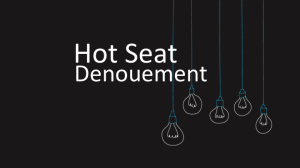Hot Seat Case #98 Denouement: 3 yo F with Hypoxemia
Posted on: September 18, 2017, by : Jeremy Root
Jeremy Root, Children’s National Medical Center
The Case:
3 year-old female presenting with respiratory distress and hypoxemia requiring increasing support. However, the patients mother would not allow more than blow by oxygen which ultimately transitioned to a ventimask at 30% FiO2 after several conversations by the provider. The patient’s hypoxemia continued to worsen, concerning the provider, however, the mother continued to refuse any further interventions and threatened to leave AMA. This dilemma during normal business hours is tricky enough, but at 3 AM is a whole ‘nother can of worms.
Here’s How You Answered Our Questions:
Discussion:
We all were in agreement that this case made us cringe a little inside. An important and memorable step in all our careers was the first day of medical school when we took the Hippocratic Oath – “Primum non nocere – First do no harm”. Allowing this child to remain hypoxemic for such a prolonged time bears down the door of hypoxic brain injury and further debilitates this child with complex medical problems to begin with. Every medical decision we make weighs the intricate balance of risks and benefits, and of course we want our patients to be as comfortable as possible. But, the trade off of nostril cells to brain cells this mother was willing to take was dumbfounding to the group. Dr. Chapman brought up a great point that although a resistant or difficult patient/family are projecting their anger, it often stems from somewhere and it is out duty to uncover that. The mother may have had a devastating or traumatizing memory associated with a nasal cannula which is where her fear stems from.
It is also important to know how your specific institution handles these cases. Here at CNMC we have a Charge Doctor that handles much of the administrative dilemmas for the day so it is important in this situation to involve them right away. This gives the family not only a second physicians point of view, but this person tends to be more senior as well which can lend its own hand. The next step is to call Legal, even in the middle of the night because someone is always on call. Child protective services should tangentially be involved and if you are unhappy with their decision to elevate to the CPS supervisor. The final layer of escalation in our ED would be the Hospital Administrator on call. All in all, this situation is difficult but the more back-up one has, the more we can defend our decisions to truly do what is best for the child.
The final and most practical point that was made by Dr. Root was that security is not allowed to touch/restrain parents. In the event that parents attempt to remove their child you must let them go and call the police.
Denouement:
Due the patient’s tenuous clinical status, security stood out the patient’s room to intimidate the patient and mother from leaving the hospital. Frank discussions were made with mother that a CPS case was started and she would significantly risk losing custody of her child if she took him out of the hospital. After many accusations and threats to physicians and staff, the mother eventually agreed to allow the respiratory therapist to put on the nasal cannula and the patient was admitted to the PICU on BiPaP.
The information in these cases has been changed to protect patient identity and confidentiality. The images are only provided for educational purposes and members agree not to download them, share them, or otherwise use them for any other purpose.
